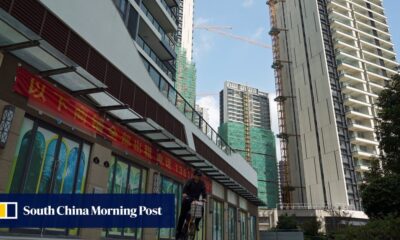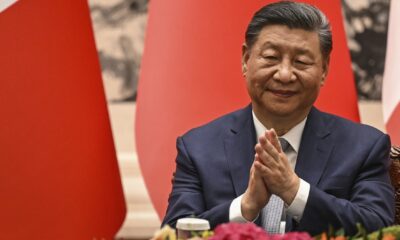Trade
China’s agricultural bans don’t yet threaten Taiwan’s economic security

Author: Roy C Lee, CIER
Following China’s ban of Taiwanese pineapple and wax apple imports in 2021, grouper fish and citrus fruits joined Beijing’s expanding list of restricted Taiwanese agricultural products in August 2022. Because agriculture accounts for just 0.6 per cent of Taiwan’s exports to China, the direct macroeconomic impact of these restrictions is limited. Yet the coercive nature of these measures suggest that Taiwan needs to be prepared for the future.
The official reasoning behind the bans are sanitary and phytosanitary concerns, such as excessive pesticide residue and fruit insects. While WTO rules grant China the right to impose measures necessary to protect human, animal and plant life, China’s bans do not seem evidence-based or necessary.
For all the restrictions imposed to date and despite Taiwan’s repeated requests for information, China has not provided any scientific documentation other than border inspection data. Taiwan was even able to divert its pineapple exports to Japan two months after China’s ban, where agricultural imports are subject to equally if not more stringent sanitary requirements. This underscores concern regarding the scientific validity of China’s restrictions.
The bans are also excessive. China’s justification of its pineapple import ban is that scale insects have been detected in exports from Taiwan. Scale insects have also been found in some exports from Taiwan to Japan — but instead of being denied entry, the pineapples underwent methyl bromide fumigation at the border to alleviate the risk. This signifies the excessiveness of China’s total ban without considering less restrictive alternatives.
China’s practices also go against the obligations of the Cross-Strait Cooperation Agreement on Phytosanitary Measures regarding Agriculture Products, which has been in force since 2009. Articles 5 and 6 of the Agreement expressly stipulate that both Taiwan and China need to ‘immediately notify’ the other party of major incidents, followed by an expedited fact verification and consultation process. According to Taiwan’s Council of Agriculture, a total of 14 requests were lodged between March 2021 and March 2022 without any acknowledgment of recipient from China.
Taiwanese government and industry actors alike have concluded that these agricultural import bans amount to economic coercion, reflecting China’s political displeasures. Although the overall economic shock for Taiwan is small, these measures do create significant impacts on individual farmers involved. In the case of pineapple, while only 10 per cent of Taiwan’s pineapple production is bound for export, 90 per cent of the export goes to China. Similarly concentrated export structures can be found for wax apple, citrus fruits and grouper fish, suggesting that these agricultural products have been specifically chosen to maximise the coercive impact.
Increasing domestic consumption and diversifying export markets have been Taiwan’s main tools to alleviate the shock. With assistance from the Council of Agriculture and other government agencies, pineapple exports to Japan and elsewhere is set to reach roughly 80 per cent of exports to China in 2022.
Yet the ability to diversify might not be an option available for other targeted products, with the Council of Agriculture admitting the unlikelihood of finding alternative markets for grouper fish in the short run. More importantly, there is growing concern that these developments indicate that Beijing is moving toward a strategy of weaponising Taiwan’s economic interdependence with China to increase political pressure.
As the Taiwan–China relationship deteriorates, Taiwan needs to prepare new economic security risk assessments. China remains Taiwan’s largest trading partner and investment destination. In 2021, China and Hong Kong accounted for over 40 per cent and 22 per cent of Taiwan’s total export and import respectively and received 30 per cent of Taiwan’s total outward investment. On the contrary, Taiwan accounts for an insignificant share of China’s external trade and investment, constituting only 2.3 per cent of total exports and 9 per cent of imports. Investment to Taiwan falls outside China’s top 20 destinations.
Yet the risk level for Taiwan is still modest for the time being. For Taiwan’s import from China, over 90 per cent are intermediate inputs and alternative supply sources are available in most cases. Around half of Taiwan’s export to China are semiconductors and alternative sources of advanced chips outside…
Trade
Self-Reliance and Openness: Core Principles of China’s Third Plenary Session

The Third Plenum communique from the CCP indicates a prioritization of stability and compromise in response to China’s economic challenges. It highlights the concept of Chinese-style modernization and establishes political guidelines for balancing regulation and market forces.
The CCP’s Third Plenum communique signals a focus on stability and compromise in the face of China’s economic challenges. It emphasises Chinese-style modernisation and sets political directions for balancing regulation and market forces. While not as groundbreaking as previous plenums, it acknowledges the importance of market mechanisms and technological self-reliance, aiming to address issues like high youth unemployment and private sector uncertainty. The communique seeks to navigate the complexities of global competition and domestic innovation, potentially reshaping global supply chains and trade dynamics. Overall, it presents a pragmatic blueprint for China’s economic future.
Source : Self-reliance and openness central pillars of China’s Third Plenum | East Asia Forum
Trade
Trade Prevails Over Political Persuasions in China-Germany Relations

China and Germany maintain a strong bilateral relationship, rooted in economic cooperation despite ideological differences. Recent visits and agreements focus on expanding trade and addressing mutual concerns, navigating challenges while nurturing ties.
Evolving Bilateral Ties
China and Germany share a strong bilateral relationship, rooted in history since 1972. This connection has seen moments of cooperation intertwined with periods of tension. German Chancellor Olaf Scholz’s April 2024 visit underscores Germany’s commitment to fostering this partnership, reflecting a mutual interest in maintaining economic ties despite ideological differences.
Economic Pragmatism
As the second and third largest global economies, China and Germany’s economic interdependence is crucial. Germany emerged as China’s primary trading partner in 2023, with trade values reaching €254.4 billion (US$280 billion). In response to global scrutiny, Germany has taken a balanced approach, emphasizing economic stability over political discord. This was evident during Scholz’s prior visit in November 2022, where his diplomatic tone contrasted with broader EU sentiments.
Facing Challenges Together
Despite increasing public skepticism in Germany regarding China’s global influence and human rights issues, both nations continue to seek common ground. Their October 2023 Joint Statement highlights intentions to pursue cooperation in areas like carbon neutrality and open markets. To navigate these complex terrains, Germany can utilize its institutional frameworks to enhance dialogue, while also considering supply chain diversification to reduce dependency on China. The intertwining nature of their economies suggests that, despite challenges, both countries will continue to prioritize their substantial trade relations.
Source : Trade trumps political persuasions in China–Germany relations
Trade
Fixing fragmentation in the settlement of international trade disputes

Fragmentation in global trade due to the lack of development in multilateral trade rules at the WTO has led to an increase in FTAs. The Appellate Body impasse has further exacerbated fragmentation, requiring a multilateral approach for reform.
Fragmentation in Global Trade
Fragmentation in global trade is not new. With the slow development of multilateral trade rules at the World Trade Organization (WTO), governments have turned to free trade agreements (FTAs). As of 2023, almost 600 bilateral and regional trade agreements have been notified to the WTO, leading to growing fragmentation in trade rules, business activities, and international relations. But until recently, trade dispute settlements have predominantly remained within the WTO.
Challenges with WTO Dispute Settlement
The demise of the Appellate Body increased fragmentation in both the interpretation and enforcement of trade law. A small number of WTO Members created the Multi-Party Interim Appeal Arbitration Arrangement (MPIA) as a temporary solution, but in its current form, it cannot properly address fragmentation. Since its creation in 2020, the MPIA has only attracted 26 parties, and its rulings have not been consistent with previous decisions made by the Appellate Body, rendering WTO case law increasingly fragmented.
The Path Forward for Global Trade
Maintaining the integrity and predictability of the global trading system while reducing fragmentation requires restoring the WTO’s authority. At the 12th WTO Ministerial Conference in 2022, governments agreed to re-establish a functional dispute settlement system by 2024. Reaching a consensus will be difficult, and negotiations will take time. A critical mass-based, open plurilateral approach provides a viable alternative way to reform the appellate mechanism, as WTO Members are committed to reforming the dispute settlement system.
Source : Fixing fragmentation in the settlement of international trade disputes






